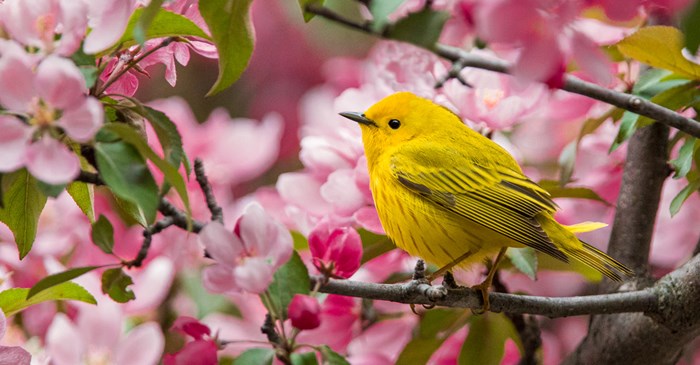When a sunshine-yellow bird alights on your feeder or in a tree in your backyard, their brilliant beauty makes the moment special.
Yellow feathers are frequently found in birds that spend much of their lives hopping around in treetops foraging for the insects. If you have tall trees on your property, that’s a welcome sign for these beauties.
What makes their feathers yellow, in many cases, isn’t pigment but diet. Carotenoids are yellow, orange, and red pigments that are found in a wide variety of plants, algae, and bacteria. When eaten by these birds, the body uses these pigments to bring color to their plumage.
American Goldfinch
Characteristics: Canary yellow birds with black foreheads, black wings, and a stout, conical beak.
Where found: The American Goldfinch lives and nests throughout the continental U.S.
Fun facts: These birds are strict vegetarians, though they will feed their young the occasional insect. They’re also one of few birds that thrive equally well in human habitats and the wild. These two traits make them frequent feeder visitors.
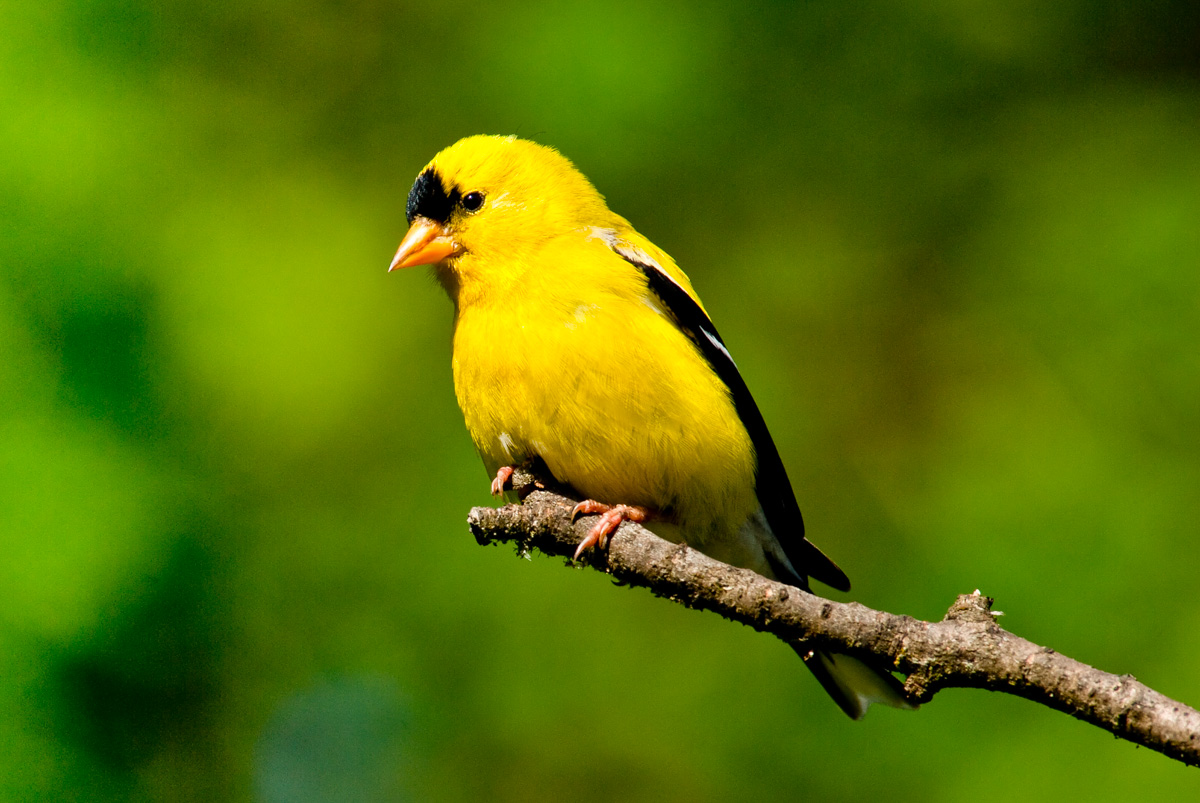
JeffGoulden / E+ / via Getty Images
Evening Grosbeak
Characteristics: Large black and yellow finch with a bright yellow “monobrow.” Has a stout, conical beak for smashing open seeds.
Where found: Primarily in the northern U.S. and the Rocky Mountain region. May travel further south for the winter, depending on food supplies.
Fun facts: They expanded to habitat eastward thanks to the proliferation of the box elder beetle. In the summer, look for them high in the trees as they forage for beetles. As they search for fruit and seeds in the winter, they just might make one of those rare and wonderful feeder visits that causes excitement!
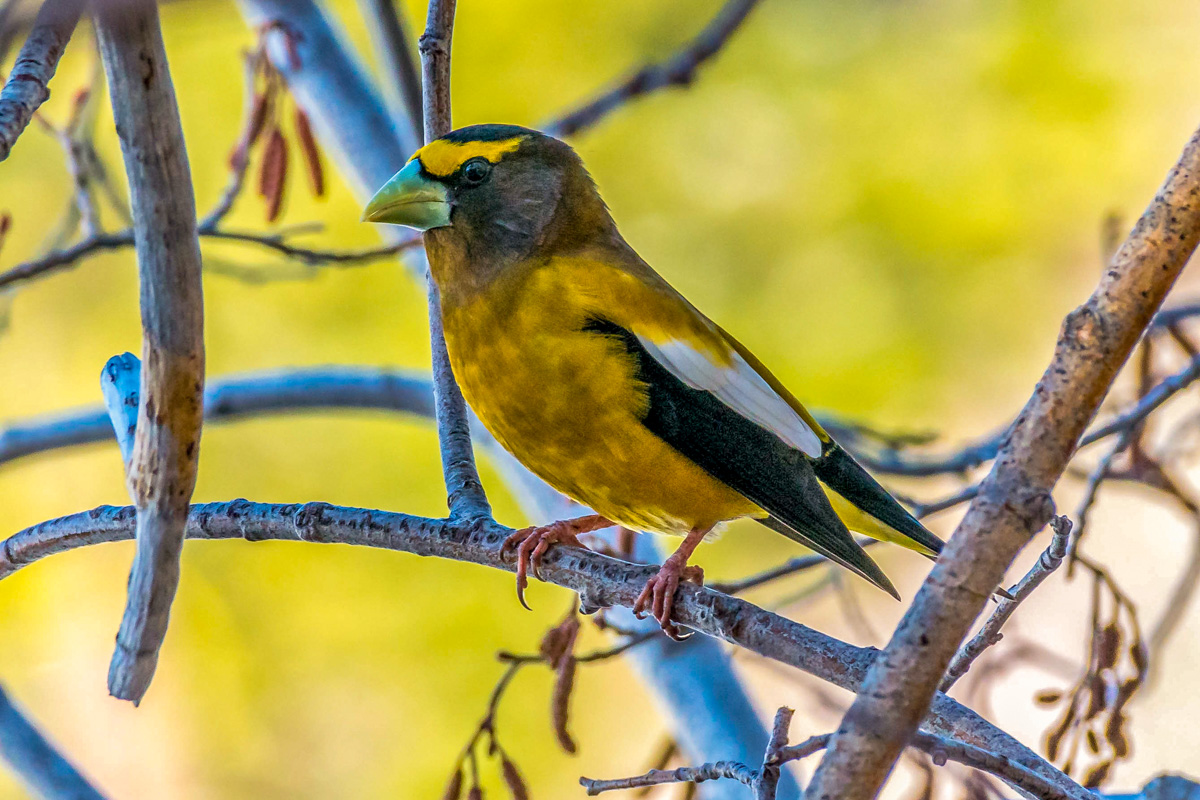
MBRubin / iStock / via Getty Images
Yellow Warbler
Characteristics: The Yellow Warbler is a standout, with its uniformly yellow plumage, with bits of green in the wings and back and russet-colored streaks on the breast.
Where found: They can be found through much of the U.S. (except the southernmost states) in woodlands and along waterways for the nesting season, but migrate to Central and South America for the winter.
Fun facts: These little guys are mightier than you think! They have the stamina to fly across the Gulf of Mexico nonstop. However, with their insect-driven diets, they rarely visit feeders. But once you spot one of these handsome little fellows out and about, you’ll want to find more warblers!
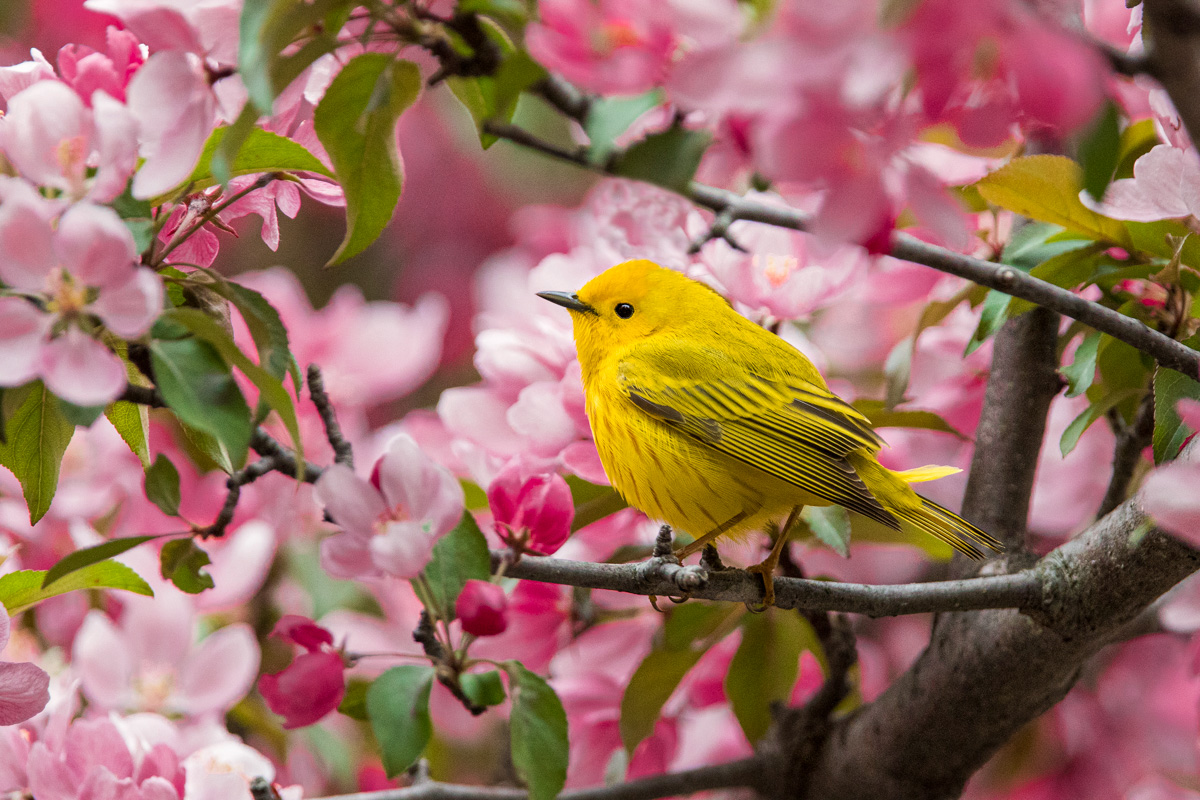
Mirceax / iStock / via Getty Images
Western Tanager
Characteristic: Poetically described as a flying sunset, the plumage of the Western Tanager is an eye-catching spectacle. The flame-orange head coloring transitions to bright yellow in the body.
Where found: As the name suggests, Western Tanagers are found generally west of the Rocky Mountains during the summer nesting season, migrating to Mexico for the winter.
Fun facts: Western Tanagers live in the open woods and can be found foraging for insects around the tops of conifers, but they’re also drawn to parks and yards. At feeders, they’ll eat fresh-cut fruit, particularly oranges. But they’ve been known to snack on seeds for fuel before migration.
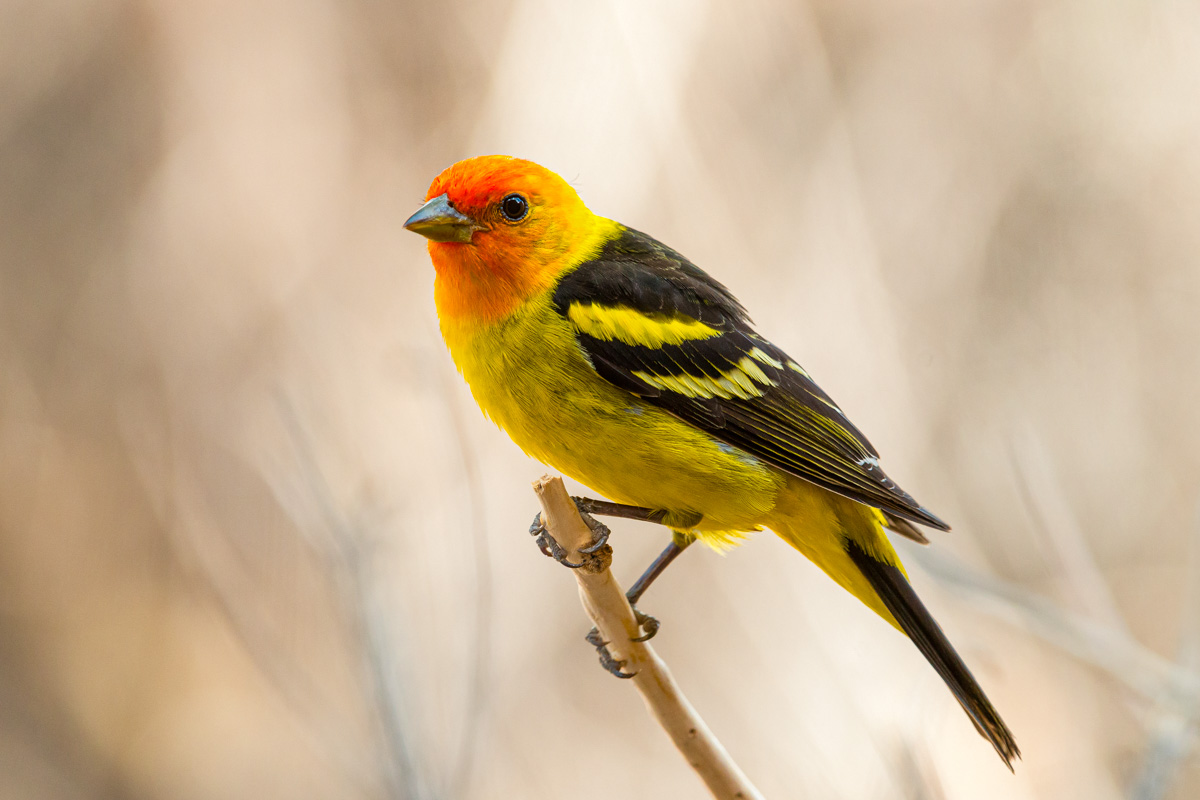
pchoui / iStock / via Getty Images
Summer Tanager (female)
Characteristics: Keep in mind: That greenish-yellow bird you see can sometimes be the distinct feature of a female species, and that’s true of the Summer Tanager. If you’re struggling to confirm that yellow bird with the long, thick bill, see if the brilliant red male Summer Tanager is nearby.
Where found: The Summer Tanager spends the summer nesting season throughout the southern U.S., migrating to Central and South America for the winter.
Fun facts: If summer wasps bother you, the Summer Tanager is your friend. In fact, they have amazing abilities to catch these insects in mid-flight. To draw them into your yard, plant fruiting shrubs, which provide a welcome late-summer snack.
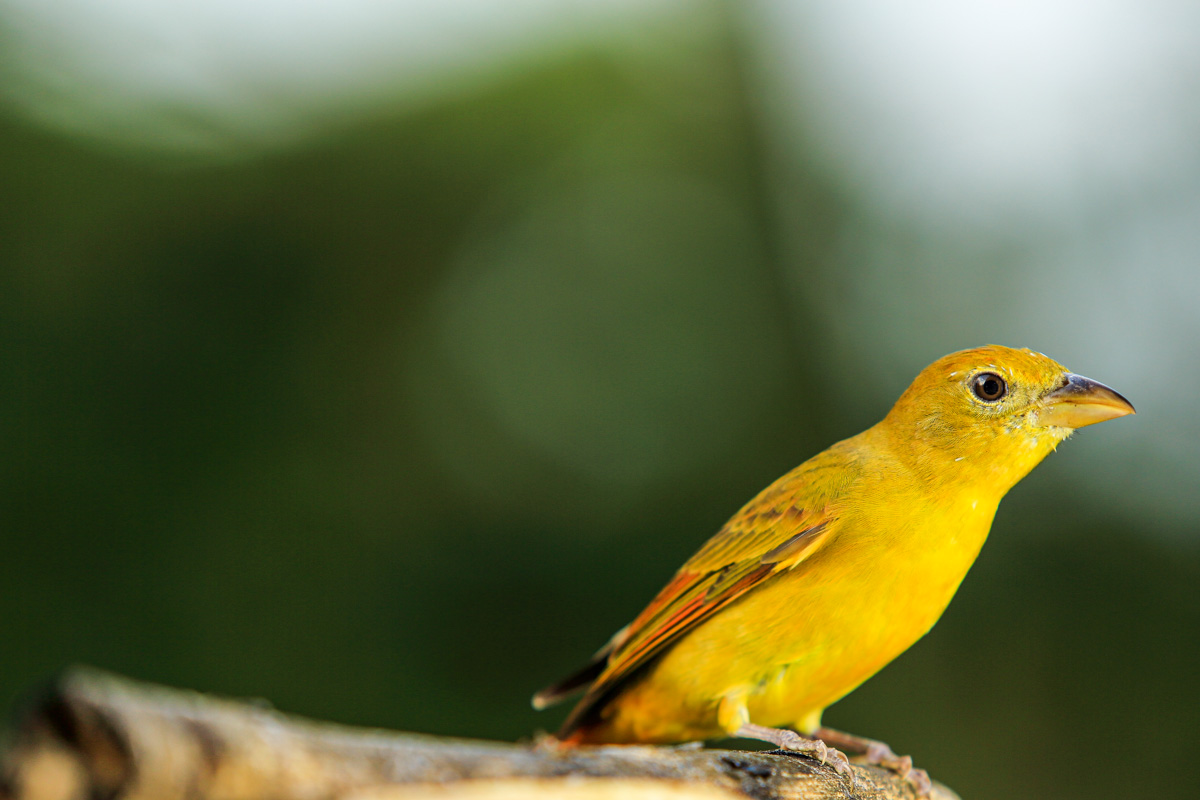
Camacho9999 / iStock / via Getty Images
To draw in the colorful birds in your neighborhood, fill your feeder with Lyric Supreme Wild Bird Mix. This blend features more than 50% nuts and seeds and is formulated to attract the widest variety of bird species to your backyard.
